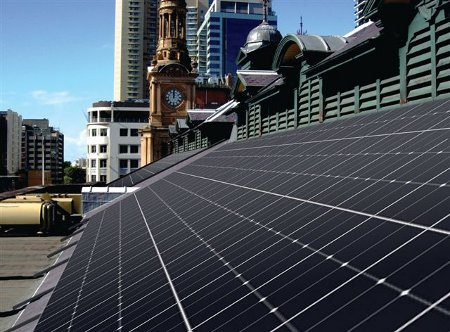
|
Published: 29 August 2011
Local and federal govts set sights on energy efficiency payoffs
The City of Sydney has announced it expects to save $1.3 million a year through a $6.9 million overhaul of the energy and water performance of its major buildings. The annual savings will enable the City to recoup its investment in six years.

|
|
The Sydney Town Hall retrofit include 240 solar panels on the newly restored slate roof. Credit: City of Sydney
|
Lord Mayor Clover Moore MP said the energy overhaul will enable the City to meet its ambitious target of cutting its carbon emissions by 70 per cent by 2030 (relative to 2006 levels).
The new program will cut annual carbon emissions by 7000 tonnes ‘...taking the City’s overall emissions reductions from 6.8 per cent to 19.9 per cent’, according to the Lord Mayor.
‘Cities are responsible for 70 per cent of carbon emissions globally, so it’s essential that we take firm action now to green our offices and buildings,’ she says.
The energy overhaul will see 46 of the City’s major buildings retrofitted, including Town Hall House, public pools, community centres, libraries and car parks.
They will be fitted with energy efficient lighting, air-conditioning and heating, centralised power management systems to reduce energy consumption by computers depending on activity, and voltage reduction units to slash electricity use in pumps, fans and lights.
Water-saving devices including aerated taps and shower heads, cistern modifiers in toilets and waterless urinals, will also be installed.
The retrofit will cut energy use by 7.5 million kilowatt hours (kWh) a year – about the same amount of electricity used by a thousand homes. Water consumption is expected to fall by 61 360 kilolitres a year.
Meanwhile in Canberra, a motion moved by Greens leader Senator Bob Brown calling on the Federal Parliament to take ‘The 10% Challenge’ and reduce its usage of fuel and energy by 10 per cent has been passed in the Senate.
Given that Parliament spends more than $3 million a year on energy, a 10 per cent cut would amount to a savings of $300 000 a year for taxpayers. The motion is yet to be passed in the House of Representatives.
Source: City of Sydney, crikey.com



